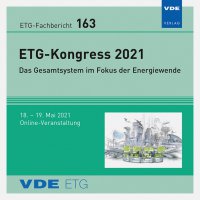Testing Automated Operation and Control Algorithms for Distribution Grids Using a Co-simulation Environment
Conference: ETG-Kongress 2021 - ETG-Fachtagung
03/18/2021 - 03/19/2021 at Online
Proceedings: ETG-Fb. 163: ETG-Kongress 2021
Pages: 6Language: englishTyp: PDF
Authors:
Schoen, Andrea; Braun, Martin (Fraunhofer Institute for Energy Economics and Energy System Technology, Kassel, Germany & University of Kassel, Department of Energy Management and Power System Operation, Kassel, Germany & Fraunhofer Cluster of Excellence Integrated Energy Systems, Germany)
Ringelstein, Jan; Hammermeister, Irene (Fraunhofer Institute for Energy Economics and Energy System Technology, Kassel, Germany & Fraunhofer Cluster of Excellence Integrated Energy Systems, Germany)
Wille-Haussmann, Bernhard; Marchand, Sophie (Fraunhofer Institute for Solar Energy Systems, Freiburg, Germany & Fraunhofer Cluster of Excellence Integrated Energy Systems, Germany)
Ruhe, Stephan; Nicolai, Steffen (Fraunhofer Institute of Optronics, System Technologies and Image Exploitation, Advanced System Technology Branch, Ilmenau, Germany & Fraunhofer Cluster of Excellence Integrated Energy Systems, Germany)
Abstract:
This publication presents a co-simulation framework that enables joint simulation experiments by multiple remote laboratories for analyses of smart grid energy systems that can also include power hardware-in-the-loop. It introduces a proof of concept where individual parts of an example electrical grid are modelled at three geographically distributed Fraunhofer Institutes. The models differ greatly in terms of their used tools, functionality, control algorithms, and time resolution. Real-time and non-real-time systems can be combined as well. The framework is developed within the Distributed Grid Lab of the Fraunhofer Cluster of Excellence Integrated Energy Systems (CINES). The goal is to allow laboratory collaboration for addressing the needs of users such as manufacturers, grid operators and research institutions to test their grid automation solutions before field deployment. This testing can be done considering the interactions of various components and solutions at different remotely located testing facilities without needing to use the same hardware and software setup. A demonstrator is developed to highlight these capabilities.


